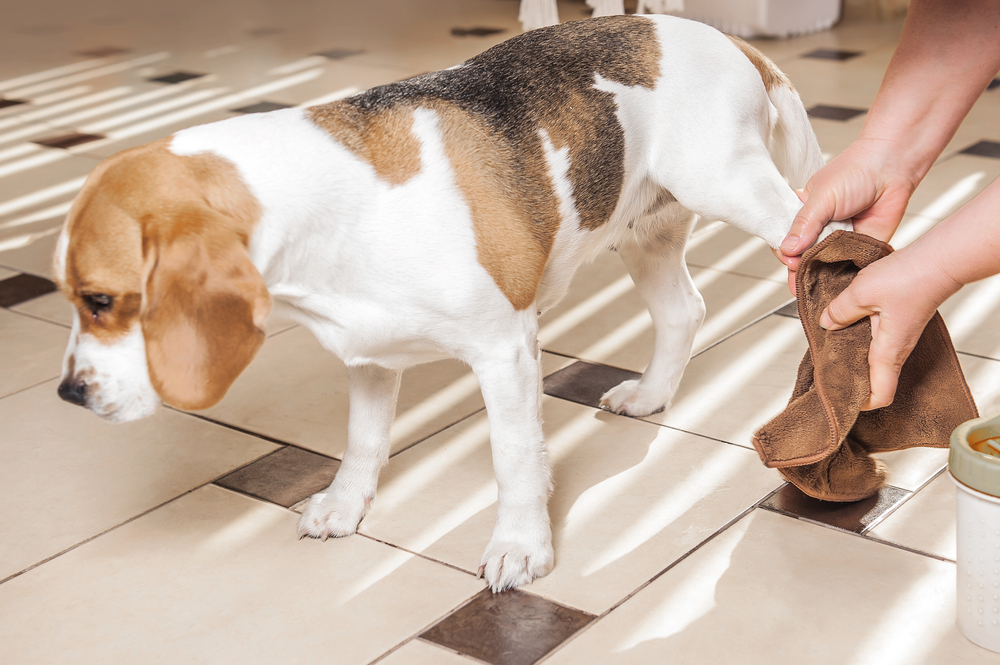Pododermatitis in dogs: what it is and how to treat paw inflammation

Table of contents
Pododermatitis is one of the most common dog paw problems in veterinary clinics. Although it is not rare, it can leave owners worried when they notice inflammation in their dog's paws. Although it is not a serious condition, it is important to have an early diagnosis in order to be able to treat the problem and provide comfort and well-being to the pet again. To guide you through this process,we've put together everything you need to know about pododermatitis in dogs - check it out!
What is pododermatitis in dogs?
Pododermatitis in dogs is an inflammation of the paws that can manifest itself on the plantar pad or between the toes, leaving a reddish and irritated appearance. Searching for images of pododermatitis in dogs, it is easy to notice other symptoms such as hair loss in the injured area, scaling, thickening of the skin, inflammation of the nails and even erosions and ulcers. Some changes as wellcan be observed in the pet's behavior, which may start to limp and become more apathetic. The dog licking its paws frequently is also a symptom of pododermatitis.

What are the causes of pododermatitis?
Pododermatitis in dogs is so common because the paws are constantly in friction with the ground, which can also cause stress between the toes. These traumas increase the chances of infection with bacteria, especially in the front paws. The dog paw can also become inflamed due to allergic reactions or moisture build-up, which leads to the proliferation of microbes and fungi. Dogs with theWeakened immune systems are more vulnerable to pododermatitis, so keeping vaccinations up to date and feeding them well are fundamental precautions so that the body can fight any illness or irritation more quickly.
What is the remedy for pododermatitis in dogs?
The best remedy for pododermatitis in dogs will depend on the exact cause of the problem - whether there has been infection by bacteria, fungi or other microorganisms, whether it is an allergic reaction, etc. Therefore, seeking the advice of a veterinarian is essential. When the professional prescribes the appropriate dog medicine, whether oral or topical, it is important to follow the treatment for the entire duration of the treatment.Even if the symptoms improve before the end of the medication period indicated by the veterinarian, the condition may return if the treatment is not completed. Therefore, follow the recommendations to the letter.

How to treat pododermatitis in dogs?
In addition to the use of the remedy for pododermatitis in dogs, other routine habits can help in the care of the dog's paws. Cleaning and drying the area well when returning from walks is a simple but very effective care to keep the feet sanitized and protected. If you prefer, invest in dog socks or shoes that offer protection during walks. Also remember to moisturizeregularly check the paw pads to avoid dryness and cracks, which facilitate infection. Finally, keep an eye on your dog's behaviors to seek help from a veterinarian if you notice any changes in the way he walks, steps or runs.

